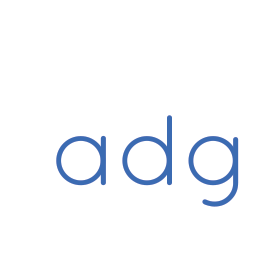
ADG Online Webinar Presentation
FRIDAY 26 SEPTEMBER 2025
10:00AM – 12:30PM AEST
ADG MEMBERS FREE
Don't forget to join us and your fellow directors, as we explore some of the business, legal and industrial issues facing Australian screen directors today. Your rights, obligations and entitlements will be the focus of this Australian Directors’ Guild online presentation and discussion – free to our members! Contributing their expertise and insights to the discussion, and ready to take your questions will be:
Darren Ashton - ADG President and Working Director
Darren is a highly experienced award-winning director and producer across television and film. He is currently a Creative Executive with Northern Pictures. Previously he was set up director for the hit series Here Come the Habibs! for Jungle and the Nine Network and associate script producer on Season 2. Other television credits include The Wrong Girl for Network Ten, Wonderland for Fremantle Media, Worst Year Of My Life Again for the ABC and BBC, and Rush and Offspring for Endemol and Network Ten.
JONATHAN BROUGH –Director and ADG VP (Television)
Aotearoa/New Zealand-born Jonathan Brough is the director of Rosehaven, The End, Sammy J & Randy in Ricketts Lane, Ronny Chieng: International Student and, most recently, Playing Gracie Darling for Paramount+. He is also the VP of Television for the ADG.
MICHAEL FRANKEL AM – Partner, Frankel Lawyers
Michael Frankel BA, LLB, AM, has been practising law for 45 years. He works extensively in Intellectual Property, Film, Television, Theatre, Music, Media, Defamation, and Indigenous rights, Publishing and Public Interest law, and the firm litigates in those areas. The firm provides pro-bono assistance to the ADG. Michael is a member or director of numerous industry related committees and organisations. Michael was awarded Order of Australia AM in 2007 in recognition for service to the law, particularly in the areas of cultural and intellectual property rights, to film and performing arts organisations, and to a range of media industry associations. He was honoured with Life Membership to the Australian Society of Authors in 2003.
DEB JACKSON – Executive Director, ASDACS
Deb Jackson has led a decade of strategic growth, expanding international partnerships, increasing revenue, and modernising operations. Her leadership introduced a new membership model that boosted domestic income and streamlined members payments. Deb has held roles at Screen Australia, NFSA, and AFTRS, and brings industry knowledge across production, distribution, and governance. She holds a BA in Film Studies from Sydney University and serves on several international CISAC audio-visual committees, championing the rights and recognition of screen directors globally.
James Green – Education Specialist Media Super
James has an extensive background in the financial services and superannuation industry. He enjoys the opportunity to speak to members about all things super – wherever there is an audience, you’ll find James assisting members to help them understand how to make the most of their super to maximise their retirement outcomes, and make their hard work pay off.
SOPHIE HARPER – Executive Director, ADG
Sophie Harper was the senior fund manager at Screen Canberra, where she oversaw programmes including the A$5m (US$3.3m) CBR Screen Fund for the Australian Capital Territory government. Sophie has a European screen background having been based in Denmark from 2009 to 2015, holding a variety of roles at the European Film College. Prior to that she worked at both Screen Australia and the Australian Film Commission in various roles, including in governance and compliance. Harper is also a content creator, developing and hosting successful podcast Not By Accident.
Get your FREE ticket here
SCHEDULE
10:00AM – SESSION 1:DIRECTOR’S RIGHTS AND AGREEMENTS
This session will look at Directors Rights: contracts, moral rights, royalties, type of employment, liability, financial responsibility for the production and much more.
- Directors’ rights & protections in Australia
- Creative rights
- Directors’ rates of pay
- Contractual obligations as screen content platforms evolve
- International production environment
- The emergence of AI
- Do I need a lawyer?
- The steps in negotiating a director’s agreement
11:20AM – 10-MIN BREAK
11:30AM – SESSION 2: ALL THINGS SUPER
This session features Media Super’s Super Basics presentation, with Q&A to follow. Whether you’re working as an employee, contractor or self-employed, we don’t think you can afford to miss it!
- Media Super / fund overview
- How Super works
- Contributions – how to contribute as a freelancer
- Contractors vs Employees (carve out in the act for some creatives)
- Taking your Super with you
- Investments and Insurance
- Ethical investment of your Super
- Advice and support
